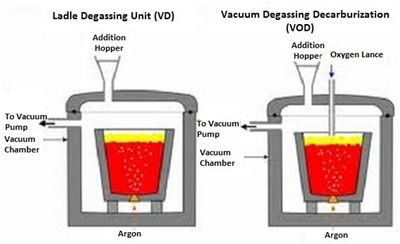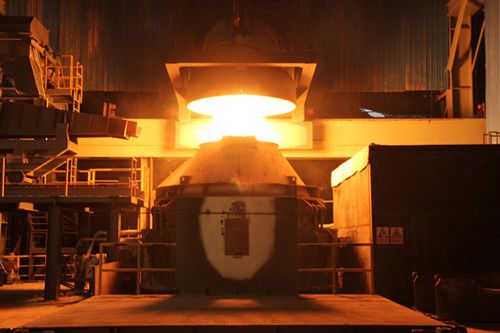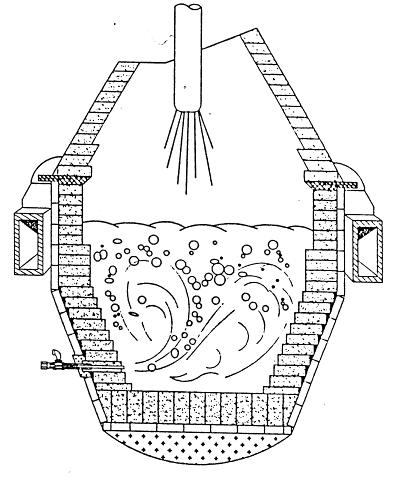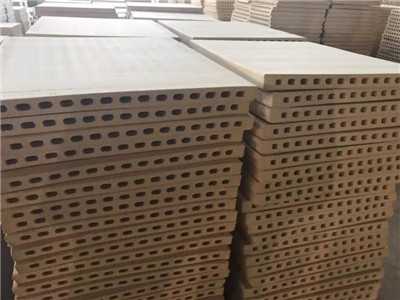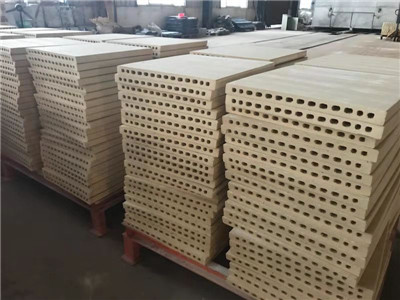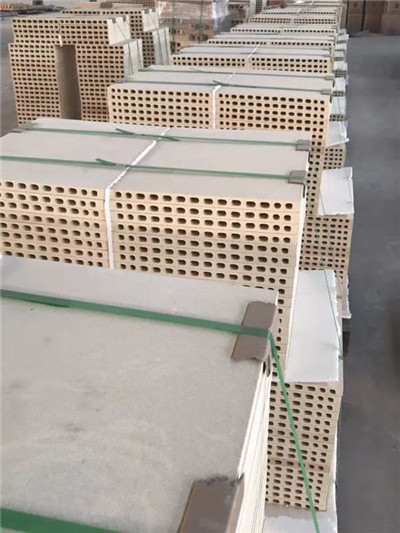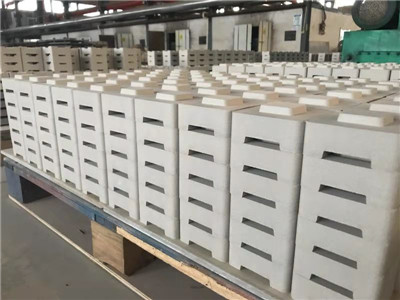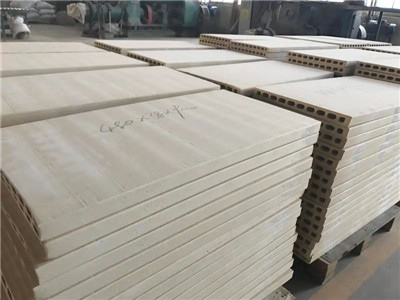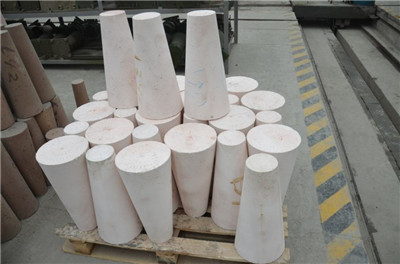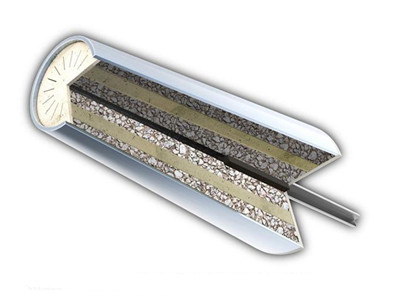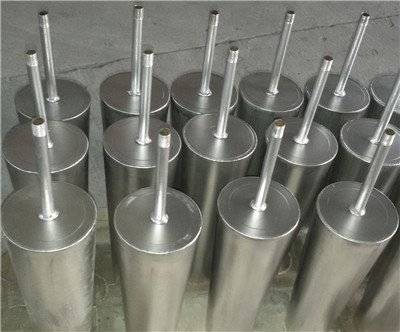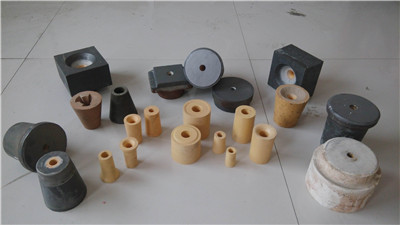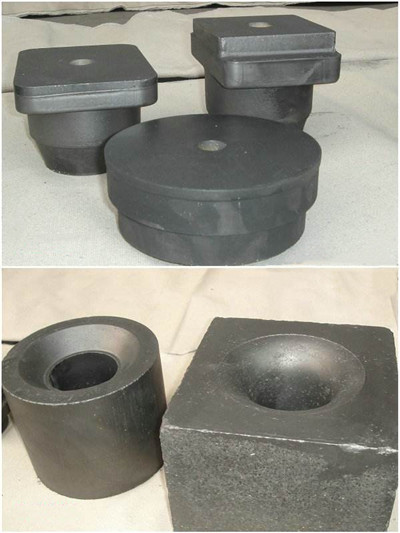VOD Furnace Refractory Material
VOD Furnace Introduction
VOD is the acronym of vacuum oxygen de-carbonization, i.e., steel liquid vacuum degassing, oxygen blowing de-carbonization treatment can be carried out in VOD refinery furnace. Oxygen blowing VOD furnace’s temperature can be higher than 1700℃, desulfurization and reduction reaction are also carried out in VOD furnace, slag alkalinity will change greatly, high smelting temperature and vacuum atmosphere will also do huge damage to furnace lining refractory material. Therefore, VOD furnace should adopt high grade refractory material.
VOD Furnace Refractory Materials
VOD slag line: Slag line zone usually adopts re-bonding magnesia chrome bricks or pre-reaction magnesia chrome bricks. Ladle wall can use low grade magnesia chrome bricks. Although magnesia chrome bricks can prolong VOD furnace’s service life, but the production cost is high. So in Europe, where dolomite refractory is abundant, VOD furnace slag line zone mainly adopts ultra high temperature sintered magnesia dolomite bricks. Furnace wall can choose lower grade sintered magnesia dolomite bricks or pitch binding unburned magnesia dolomite bricks. Magnesia dolomite refractory lining’s service life is slightly shorter than magnesia chrome refractory lining, but steel smelting cost is significantly decreased, it can bring in good economic benefits.
Below slag line: With the development of magnesia carbon bricks, for furnace body, below slag line, low carbon content magnesia carbon bricks or magnesia dolomite carbon bricks become a reasonable choice, VOD molten bath’s service life can reach to 40 times or more. After proper maintenance or patching, molten bath’s service life can be higher than 60 times. Another developing trend of molten bath refractory material is alumina magnesia castable or precast block, it can ultimately eliminate carbon in furnace lining caused adverse effect.
Cr Free Refractory Bricks for VOD Furnace
Cr2O3 in magnesia chrome bricks will finally be oxidized into Cr6+ , which has great environment pollution, so magnesia chrome bricks’ application is constrained. Ultra high temperature sintered high purity magnesia dolomite brick is a good replacement of slag line magnesia chrome bricks. Molten bath can adopt low carbon magnesia carbon bricks or low carbon magnesia dolomite carbon bricks.
VOD Furnace Refractories Physiochemical Index
| Item | High alumina spinel castable | High alumina castable | Direct binding dolomite brick | Direct binding magnesia dolomite brick | Resin binding dolomite carbon brick | Resin binding magnesia dolomite carbon brick |
| Application | Ladle cover | Vacuum cover | Molten bath | Molten bath, slag line | Slag line, molten bath | Slag line, molten bath |
| Al2O3% | 92 | 70 | / | / | / | / |
| SiO2 % | / | 22 | / | / | / | / |
| TiO2 % | / | 2.8 | / | / | / | / |
| MgO % | 5 | / | 41 | 59 | 43 | 65 |
| CaO % | 2 | 3 | 57 | 39 | 55 | 33 |
| C % | / | / | / | / | <3 | <5 |
| Bulk density g/cm3 | 3.0 | 2.80 | 2.82 | 3.00 | 2.94 | 2.92 |
| Apparent porosity % | / | / | <17 | <13 | <5 | <5 |
| Compression strength Mpa | / | / | 65 | 60 | >60 | >60 |
| Item | Alumina chrome precast block | Corundum precast block | Magnesia chrome brick | Magnesia chrome brick | Unburned corundum spinel brick | Magnesia chrome joint material |
| Application | Ladle cover | Ladle cover | Slag line, molten bath | Molten bath, slag line | Molten bath | Magnesia chrome bricks lining |
| Al2O3% | 92 | 94 | <6 | <6 | >90 | <7 |
| Cr2O3 % | >3 | / | 18~23 | 12~18 | / | 18~23 |
| Fe2O3% | / | / | <12 | <12 | / | <12 |
| SiO2 % | / | / | <1.5 | <1.5 | / | <1.5 |
| MgO % | / | / | >60 | >65 | 6~12 | >55 |
| CaO % | 2 | 2 | / | / | / | / |
| Bulk density g/cm3 | 3.0 | 3.0 | >3.15 | >3.10 | >3.05 | >2.80 |
| Apparent porosity % | <15 | <15 | <17 | <17 | <15 | / |
| Compression strength Mpa | >30 | >40 | >35 | >40 | >40 | >20 |
| Item | Magnesia spinel bricks | Alumina magnesia castable | Alumina magnesia precast block | Low carbon magnesia carbon brick | Magnesia chrome gunning mix | Magnesia chrome gunning mix |
| Application | Molten bath | Molten bath | Molten bath | Molten bath, slag line | Molten bath, slag line | Molten bath, slag line |
| Al2O3% | 8~12 | >90 | >90 | / | <8 | <8 |
| Cr2O3 % | / | / | / | / | 18~23 | 12~18 |
| Fe2O3% | / | / | / | / | <12 | <12 |
| SiO2 % | / | / | / | / | <3 | <3 |
| MgO % | >80 | 4~8 | 4~8 | >90 | >55 | >55 |
| CaO % | / | <2 | <2 | / | / | / |
| C % | / | / | / | <5 | / | / |
| Bulk density g/cm3 | >2.90 | >3.00 | >3.00 | >3.05 | >2.50 | >2.40 |
| Apparent porosity % | <15 | <15 | <15 | <5 | / | / |
| Compression strength Mpa | >60 | >30 | >30 | >80 | >10 | >10 |
| Item | Magnesia calcia gunning mix | Dolomite gunning mix | Magnesia gunning mix | Magnesia calcia joint material |
| Application | Magnesia calcia lining | Magnesia calcia lining | Magnesia calcia and magnesia chrome lining | Magnesia calcia brick lining |
| MgO % | 40 | 65 | >92 | 43 |
| CaO % | 50 | 25 | / | 55 |
| SiO2 % | <3 | <3 | <3 | <3 |
| C % | / | / | / | <5 |
| Bulk density g/cm3 | >2.40 | >2.40 | >2.40 | >2.80 |
| Compression strength Mpa | >20 | >25 | >25 | >30 |
Methods for Prolonging VOD Furnace Lining Service Life
Apart from choosing high grade furnace lining refractory material, the following methods can be taken to prolong VOD furnace’s service life.
- Improve smelting condition. Dolomite slag making method and properly decreases smelting temperature are effective measures to prolong furnace lining service life. Speeding up turnover speed and enhancing heat preservation can also significantly prolong furnace lining service life.
2. Enhancing furnace protection and furnace patching. Usually, gunning mix which has same composition with lining bricks are adopted for furnace lining patching. For example, magnesia chrome bricks lining should be patched by magnesia chrome gunning mix, magnesia dolomite bricks lining should be patched by magnesia calcia gunning mix.
